Hands in the dirt: Meet some of NYC's community gardeners
May 13, 2023, 8:01 a.m.
As the first city-sanctioned community garden celebrates its 50th anniversary, leaders of community gardens around the five boroughs share stories about cultivating green spaces and strengthening neighborhood ties.
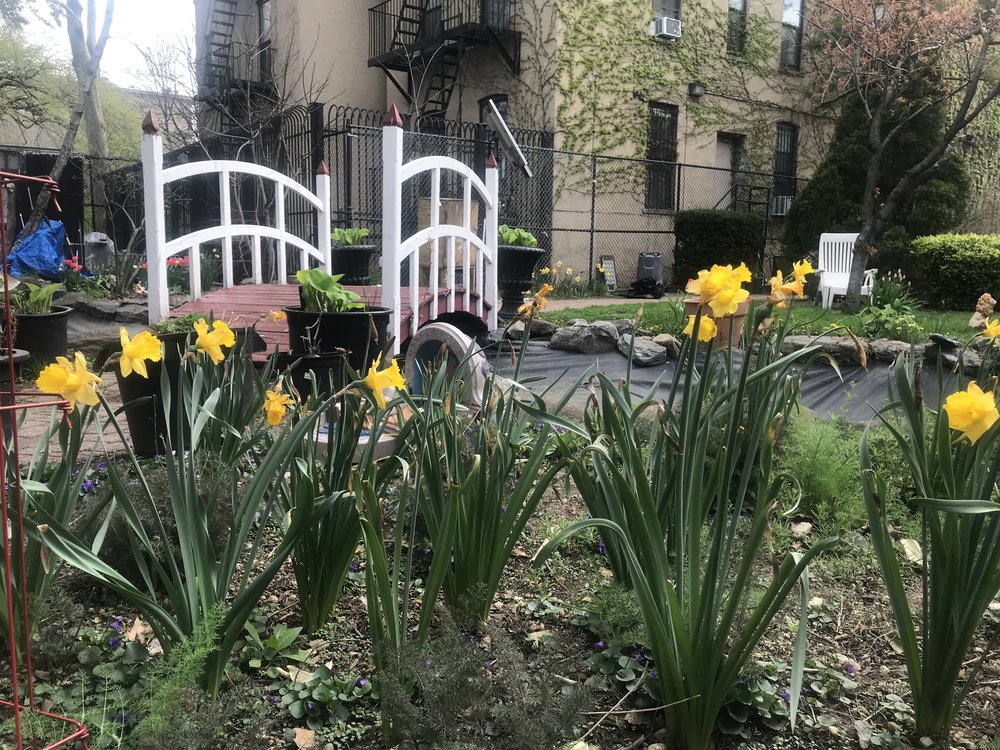
Community gardens are oases from the hustle and bustle of New York City, but their histories are rooted in the city’s darker past. Many gardens grew out of urban decay due to the hard work of volunteers, who reclaimed abandoned trash-strewn lots in their neighborhoods over the years.
The modern community garden movement in New York City began in the 1970s, when a group of college students took back a vacant lot on Manhattan’s Lower East Side. In 1973, artist and activist Liz Christy led a group of others in transforming a dangerous, garbage-filled plot of land, located on the northeast corner of Bowery and Houston Street, into a lush green space. Now known as the Liz Christy Garden, it was originally called the Bowery-Houston Community Farm and Garden. That same year, the group founded the Green Guerillas, and the organization went on to establish several other community gardens in New York City. The city recognized the importance of their work and established the GreenThumb program in 1978 to help maintain community gardens.
Today, there are more than 550 community gardens covering about 100 acres of land across the city. While the GreenThumb program provides gardens with insurance and other resources, the future of some garden spaces is uncertain due to land buyouts and other factors. Nevertheless, community gardeners and advocates continue to work tirelessly to preserve and expand these green spaces. WNYC’s Community Partnerships Desk criss-crossed the five boroughs to meet some of the volunteers committed to making sure community gardens flourish for years to come.
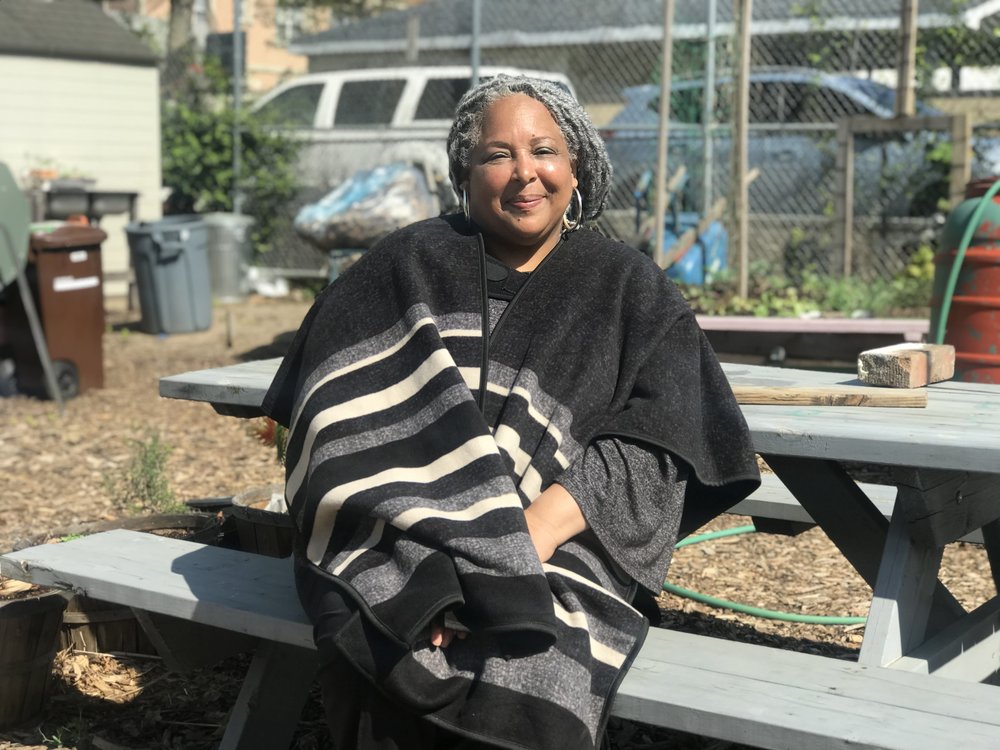
She created “Paradise” in South Jamaica, Queens
Sonia Ferraro founded Paradise Community Garden in South Jamaica, Queens, in 2020, just as the coronavirus pandemic was taking hold. She said it was a ripe time to start a garden.
“The city was turned upside down … quality food was definitely scarce and everybody was fearful. And when we found this space, we just saw a lot of opportunity to grow food and bring our friends and family here to grow with us.”
Ferraro said her journey to cultivate a community garden began with doing research on available plots of land that the city’s GreenThumb program provided. It’s far from a simple process, but GreenThumb has a handbook that provides information on policies, guidelines and protocols for establishing a community garden.
Ferraro, a registered nurse, said she visited dozens of locations during her free time over a two-month span, until she stumbled on what’s now Paradise.
When she first saw the space, it was filled with trash and debris, but Ferraro said she saw “a lot of potential” in it. Because she was working to get the garden off the ground during the pandemic, Ferraro wasn’t able to leverage the resources typically afforded through the GreenThumb program. But, she said COVID-19 didn’t stop the community from coming together.
“The people came in and volunteered,” she said. “We didn’t have any tools, they brought their tools with them.”
Ferraro says gardening is “second nature” to her. She is a Queens native, but comes from a “farming family” from the Caribbean island of Jamaica. She said her childhood is filled with memories of visiting the farm, as well as gardening with her parents in New York.
“We just [found] pleasure in watching a plant sprout, waiting for weeks and then all of a sudden it bursts through the soil," said Ferraro.
Ferraro said Paradise Community Garden grows everything from potatoes to watermelon, and plays an important role in educating the community about agriculture, food and nutrition.
“From the time we started the garden … we knew that a lot of people weren't comfortable with the soil and just putting their hands in the dirt, and some people didn't understand where their food came from.”
Ferraro said the garden is a vital resource for what she described as an “economically disadvantaged” neighborhood, and not only because it provides a space for people to grow their own food. The garden also holds workshops on topics that have nothing to do with fruits and vegetables to help low-income members of the community, like how to repair your own front door.
“A hinge might cost a dollar versus paying $150 for a carpenter to come in and fix it,” Ferraro said.
Ferraro is keenly aware that her community garden, like many others, is at risk of development, which she called a “real fear.” However, she said it also makes her want to work harder to solidify the garden's place in the neighborhood.
“I remind my gardeners and my volunteers that if they love this place, we have to continue the good work that we're doing,” she said.
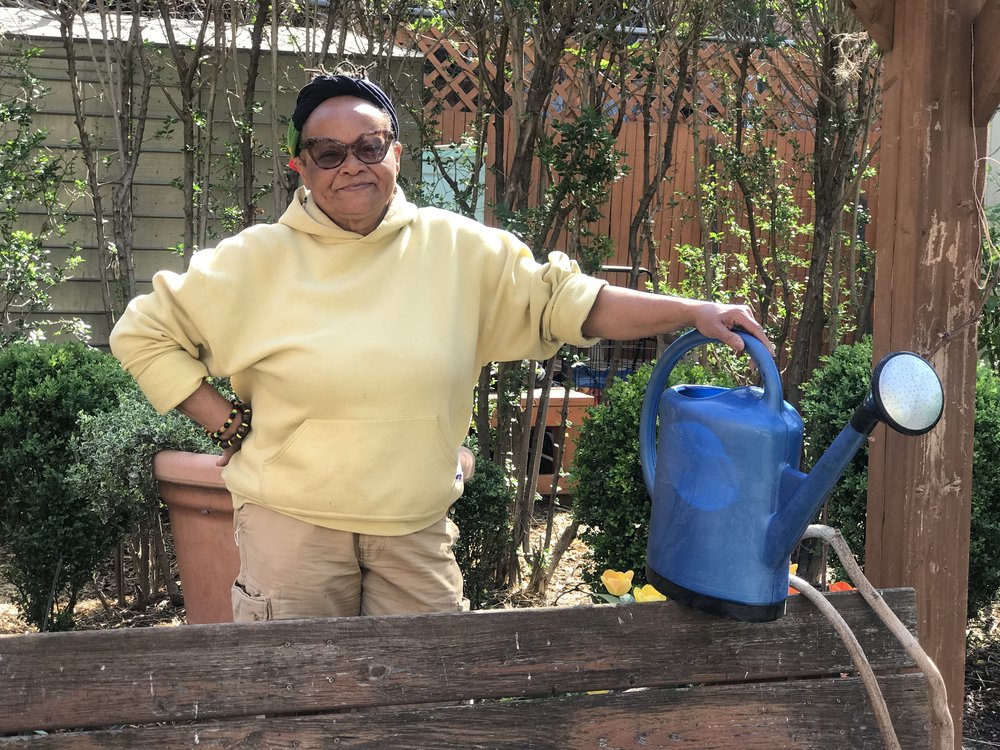
She was one of a group of Black women who brought 'Tranquility' to Bed-Stuy
Ena K. McPherson is the founder of Tranquility Farm located in the Bedford-Stuyvesant neighborhood of Brooklyn. For her, the community garden is a celebration of the efforts of Black women in the neighborhood. McPherson, who is originally from Kingston, Jamaica, said she’s one of four Black women who reclaimed vacant spaces in the community – “with no money, and we did it,” she said.
McPherson said the city's Department of Housing Preservation and Development owned the lot on which Tranquility Farm sits. That lot remained underutilized for years, until she and her gardening colleagues worked with GreenThumb to gain access and utilize it.
Today the roughly 5,200 square foot space grows a variety of vegetables, including African greens, and has chickens for eggs.
But, even after they transformed the space in 2010, they were up against an uncertain future.
“After four years, the city decided they wanted to take the land back for housing development," said McPherson. "We fought and we were successful.”
“We're just ordinary people," said McPherson. “Our legacy will be that we worked hard, we created something that's tangible and that will go on and give hope to others.”
McPherson, now 73, said her goal is to ensure the garden thrives long after she hangs up her pruning shears.
“We can’t go on forever, so you have to build the next generation,” she said.
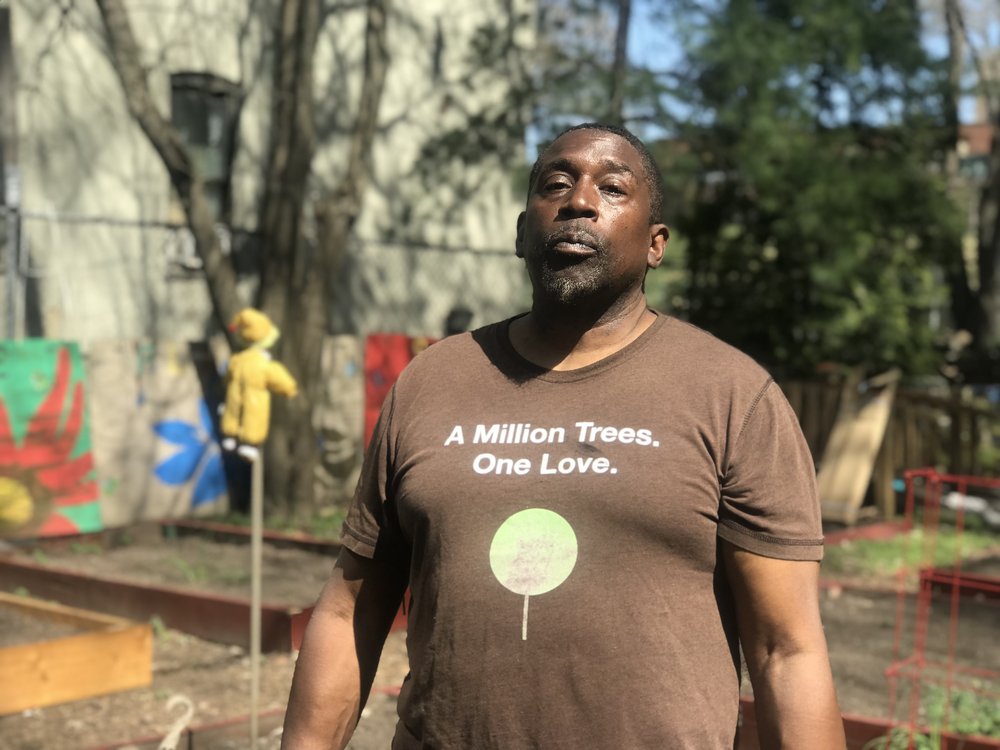
He found healing in the garden after open heart surgery
Mike Young said he was used to having a backyard when he lived in Jamaica, Queens, but lost that luxury when he moved into an apartment in the Mott Haven neighborhood of the Bronx in 2004. Today, Young spends much of his time overseeing a community garden that emerged from a chance encounter two years after he moved into the neighborhood.
Young said the seeds for the Padre Plaza Success Garden were planted one morning as he was walking his 6-year-old daughter to school. They were passing a vacant lot littered with car parts and other debris when they saw an older neighbor trying to prune a tree. “She had a little pair of scissors and [was] on a little step ladder,” Young said.
His daughter said, “Daddy, you should go help her,” which prompted Young, who worked in construction, to offer a hand. That small interaction, Young said, set off a domino effect that sparked a neighborhood-wide effort to cultivate the trash-strewn lot into an oasis.
Young said residents in the neighborhood quickly got behind the initiative and even some of his coworkers helped clear the debris and build the garden.
The garden has been a game-changer for a historically economically disadvantaged neighborhood that has struggled with urban decay, Young said.
“It was dangerous. It was drug infested. It was very violent. But, coming here, we feel safe,” he said.
Young and others in Mott Haven use the space as a focal point for community gatherings. Young said the garden has hosted three weddings and tree lighting ceremonies, among many other bonding events.
“I love that, making a place right here in the garden where we can all get together for meetings, and to talk to each other and formulate things that need to be done with our community,” Young said.
On a more personal note, Young added that the garden is good for his health, recalling when he had open heart surgery several years ago.
“What I found out is that it can be a rehabilitative place,” he said.
“And a hub for everyone else in the community as well, no matter what we're going through," Young said. "And not just because of operations, but when somebody's just bored staying in the house, nothing to do, nowhere to go.”
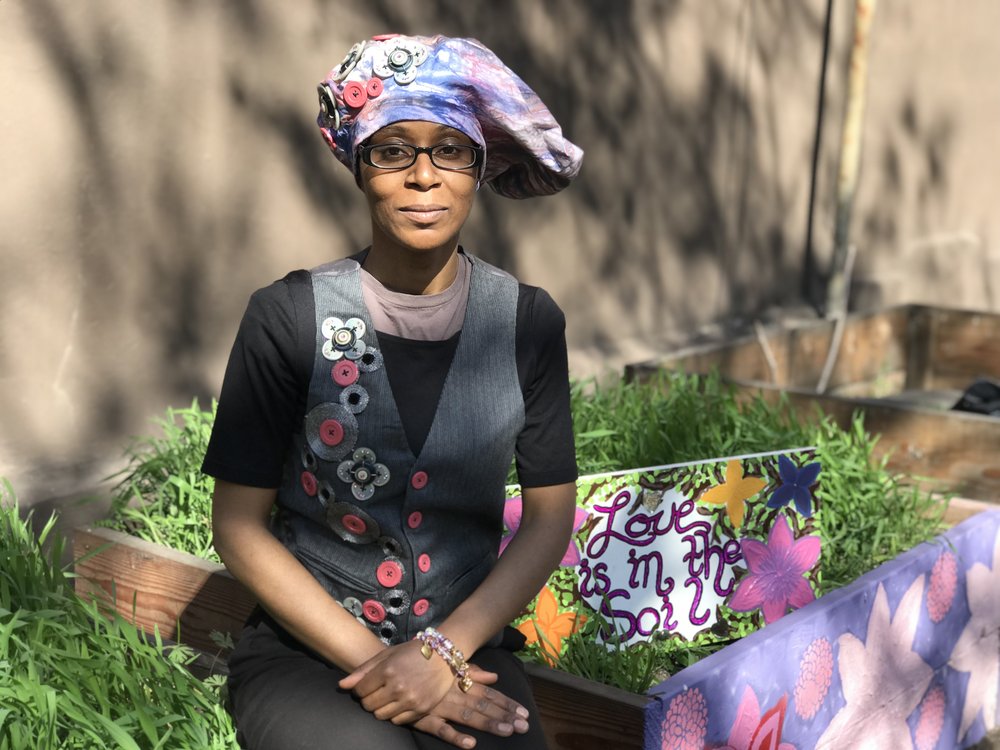
Her grandmother helped to set her up for gardening success
Nadege Alexis is one of the leaders of the St. Nicholas Miracle Garden in central Harlem. She was born in Miami, Florida, but would frequent her family’s farm in Port-au-Prince, Haiti. There, she said she remembers her grandmother singing to the plants on the farm. She said she didn’t get it at the time, but now she is very much aware of the significance of being one with nature.
“People talk about soil like it has no value," she said. "And meanwhile, the soil is one of the main things that is actually doing the work and providing us air and food.”
Alexis said the abundance of easily accessible food found in grocery stores leads people to overlook the value of homegrown produce and knowing where their food comes from. She's embarked on a mission to combat that disconnect alongside Judi Desire, her fellow leader at the garden.
Alexis also established Regiven Environmental Project, a grassroots organization that upcycles trashed materials like cardboard and paper for do-it-yourself fashion and art projects. She said she and Desire acquired the plot of land in November of 2021, after the previous neighborhood residents who were leasing the property under the GreenThumb program moved away. And since then, their goal has been centered on promoting a culture of being good stewards of the earth in Central Harlem.
It is a mantra that reverberates in their personal lives, but also in the history of the garden itself, according to Alexis. St. Nicholas Miracle Garden predates the GreenThumb program, as it was first created in the 1950s by students who saw an opportunity to transform a garbage-filled abandoned space across the street from their elementary school to grow vegetables. The property was then abandoned on and off again for years, Alexis said. The space is now much smaller than it once was and in the shadow of a high-rise residential building – one of many that have sprung up along the block.
Alexis said the urban garden's size is not equivalent to the value it brings to central Harlem as an educational resource.
“We’re doing this for sustainability,” she said, “teaching about the proper practice to grow plants indoors or in outdoor gardens.”
The work she’s doing brings memories of her grandmother full circle, Alexis said.
“When I come here and garden, it's also paying homage to her, celebrating her, because [she] taught me. I got this from her.”
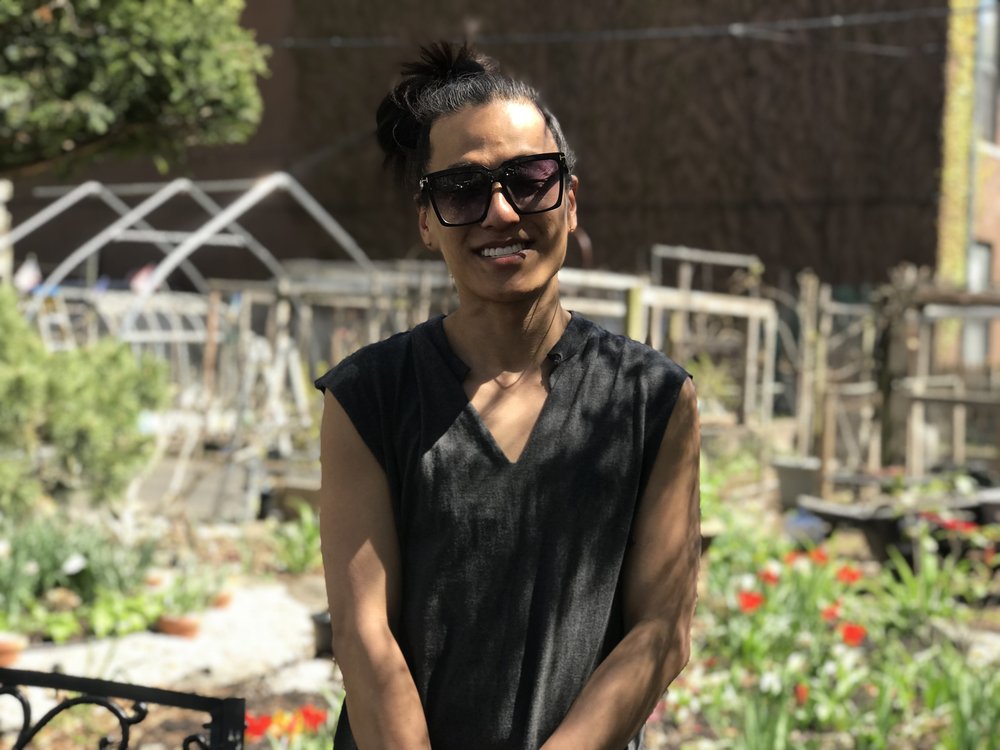
Gardening taught her lessons in patience and persistence
Kim Yim, President of Pleasant Village Community Garden in East Harlem, said she gardened on the rooftop of her apartment building before her landlord rescinded her access. “I was in a time of life where I just needed to save money and it was just economical for me to grow food for myself,” said Yim, who has lived in the community for about 20 years.
Yim found a new home to plant in Pleasant Village Community Garden back in 2019, and said she appreciates the diversity of the garden community, which includes Asian, Puerto Rican, and Afro-Latino people, among others.
“We all know who your neighbors are,” she said. “It brings a sense of closeness to everybody here in the neighborhood.”
Yim said the pandemic unfastened those ties for a time. She said participation dwindled, but involvement is now coming back and “it's definitely helped with our mental state.” For Yim, the garden was therapy during the pandemic, as she spent a lot of time there in “solitude.”
“Gardening is something that waits for no one. It is an everyday task,” she said.
Yim is aware of the tension that exists between gardens and development. In 2022, a portion of the land was taken from Pleasant Village for a new building. But, Yim remains committed to seeing the garden thrive for future generations.
“One of the ultimate lessons that can be learned from gardening is the importance of patience and persistence," she said. "Plants don't grow overnight, and neither do gardens.”